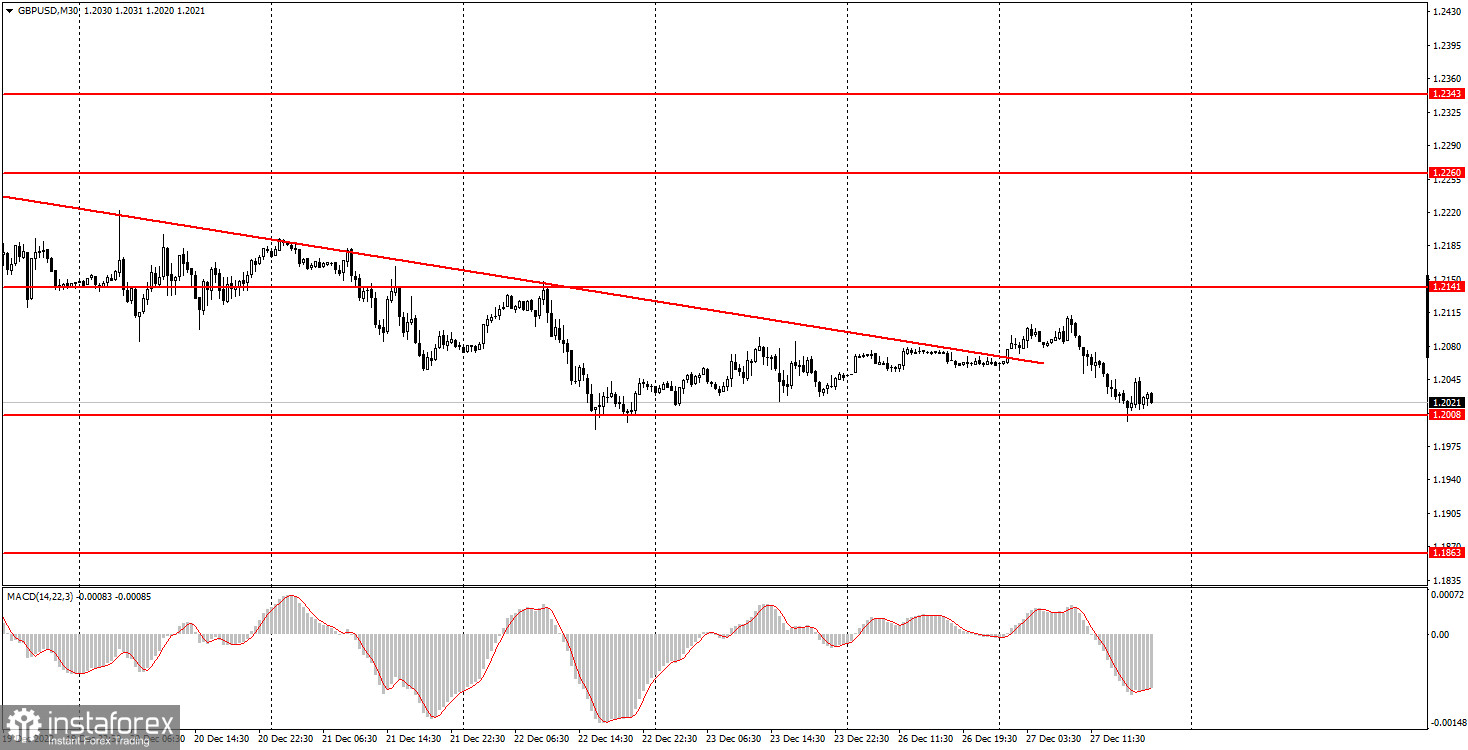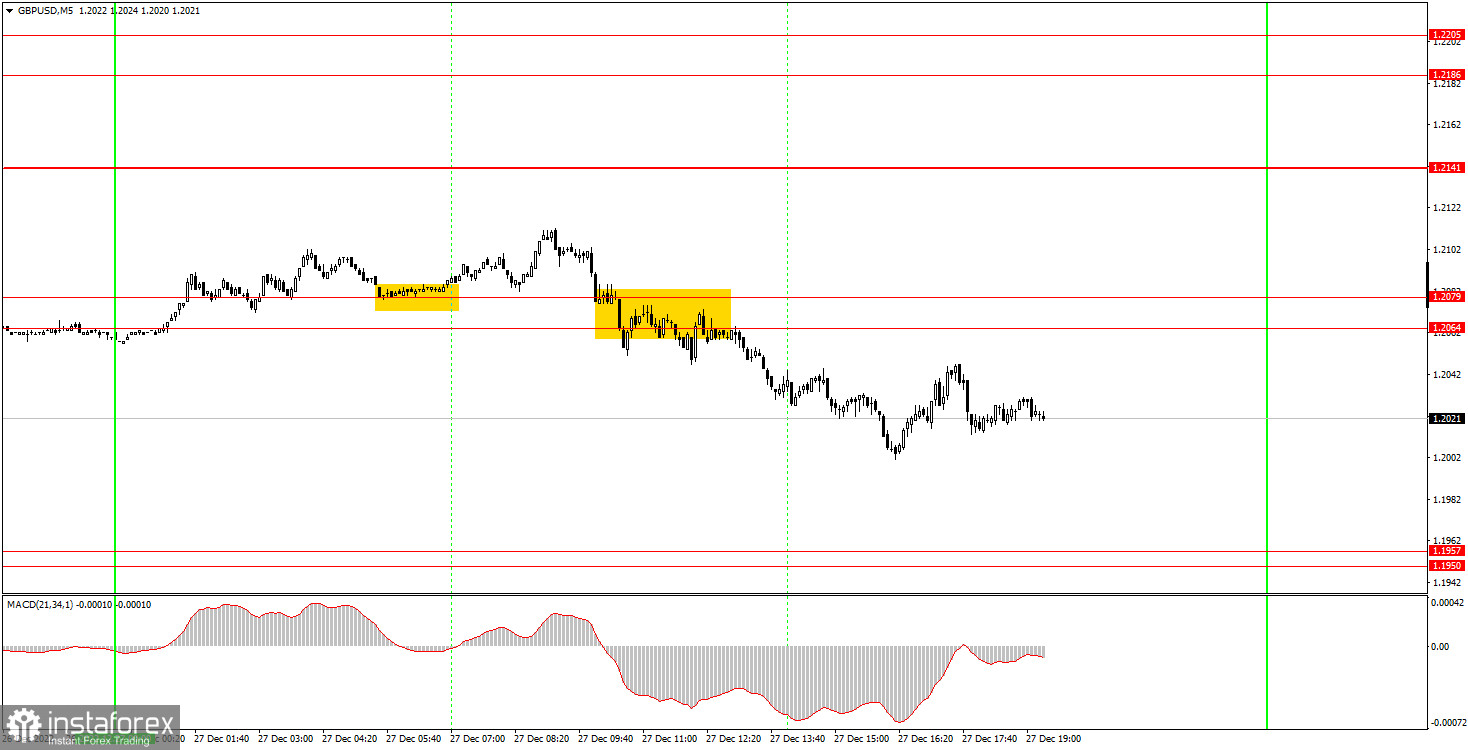Analyzing Tuesday's trades:
EUR/USD on 30M chart

EUR/USD is still in the same horizontal channel that I mentioned in the previous articles. So, the flat remains, there is no fundamental and macroeconomic backdrop, volatility is low. Trading in such conditions is very difficult, so first of all I urge you to be careful. I still expect the euro to fall, but it may start not earlier than the end of the flat. And the flat can last for a week or two or three weeks.
EUR/USD on M5 chart

Beginners were very lucky again. There were three trading signals, and even though all three of them turned out to be false (it did not reach the nearest target level), there was no loss. All three times the price rebounded from 1.0657-1.0663 area. Not very accurate, but there were sell signals. In the first case, it only passed 7 points down, so a short position should not be closed when the price returned to the area. The second time, it passed 30 pips and almost reached 1.0607. In any case, a Stop Loss should have been placed on that trade to Breakeven, which is likely used to close the position. For the third time - it passed about 13 points, but the pair did not return to the area of 1.0657-1.0663.
Trading tips on Wednesday:
EUR/USD is still in the 1.0587-1.0657 horizontal channel on the 30-minute chart. Thus, in order to count on any kind of trend movement, the pair should leave this range. The direction of the movement will be determined by which limit the pair will cross. So far, it has more chances to cross the lower limit. On the 5-minute chart, it is recommended to trade at the levels of 1.0465-1.0483, 1.0536, 1.0587-1.0607, 1.0657-1.0663, 1.0697, 1.0736, 1.0787, 1.0806. As soon as the price passes 15 pips in the right direction, you should set a Stop Loss to breakeven. There are no important reports or events scheduled in the EU or the US, so I don't expect the flat to end.
Basic rules of the trading system:
1) The strength of the signal is determined by the time it took the signal to form (a rebound or a breakout of the level). The quicker it is formed, the stronger the signal is.
2) If two or more positions were opened near a certain level based on a false signal (which did not trigger a Take Profit or test the nearest target level), then all subsequent signals at this level should be ignored.
3) When trading flat, a pair can form multiple false signals or not form them at all. In any case, it is better to stop trading at the first sign of a flat movement.
4) Trades should be opened in the period between the start of the European session and the middle of the US trading hours when all positions must be closed manually.
5) You can trade using signals from the MACD indicator on the 30-minute time frame only amid strong volatility and a clear trend that should be confirmed by a trendline or a trend channel.
6) If two levels are located too close to each other (from 5 to 15 pips), they should be considered support and resistance levels.
On the chart:
Support and Resistance levels are the levels that serve as targets when buying or selling the pair. You can place Take Profit near these levels.
Red lines are channels or trend lines that display the current trend and show in which direction it is better to trade now.
The MACD indicator (14, 22, and 3) consists of a histogram and a signal line. When they cross, this is a signal to enter the market. It is recommended to use this indicator in combination with trend patterns (channels and trendlines).
Important announcements and economic reports that can be found on the economic calendar can seriously influence the trajectory of a currency pair. Therefore, at the time of their release, we recommend trading as carefully as possible or exiting the market in order to avoid sharp price fluctuations.
Beginners on Forex should remember that not every single trade has to be profitable. The development of a clear strategy and money management is the key to success in trading over a long period of time.





















